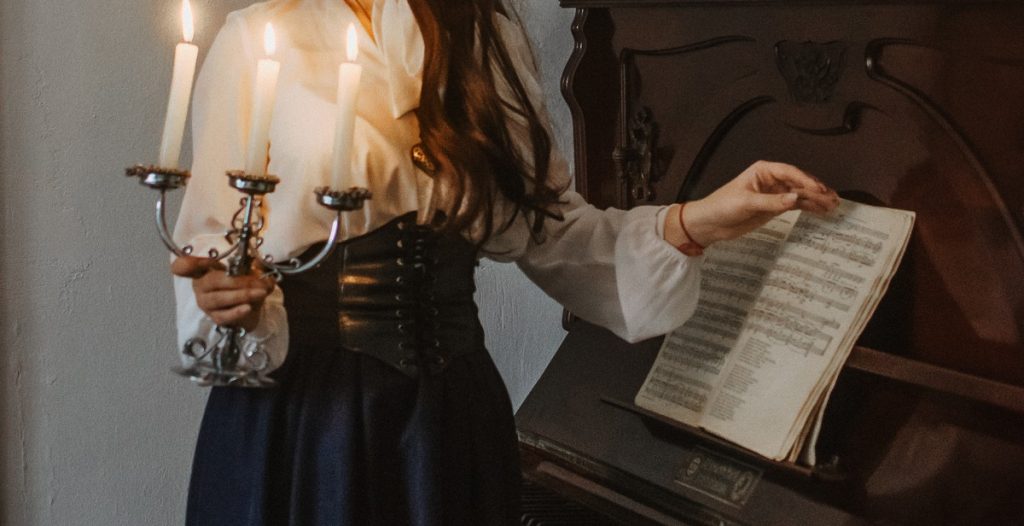The history and significance of votive candles in Catholicism
For centuries, votive candles have been an integral part of Catholicism. These small candles, usually made of beeswax, are lit as a sign of prayer or devotion to a particular saint or intention. The use of votive candles dates back to the early days of Christianity, where they were used as a symbol of offering to the gods. However, as Christianity spread, the use of votive candles evolved to represent a form of prayer and offering to God and the saints.
The use of votive candles in Catholicism has become so commonplace that they can be found in almost every Catholic church and home. The candles are usually placed in front of statues of saints or other religious images, and their flickering flame is said to represent the presence of the Holy Spirit.
Votive candles are often used for specific intentions or prayers, such as for healing, protection, or guidance. The act of lighting a votive candle is seen as a physical expression of one’s faith and belief in the power of prayer.
Overall, votive candles hold great significance in Catholicism and are a powerful tool for prayer and devotion. Whether used in a church or at home, the act of lighting a votive candle serves as a reminder of the presence of God and the power of prayer.
History of Votive Candles in Catholicism
Votive candles have been an essential part of Catholicism for centuries. These candles are typically small and placed in a holder or on a stand, and they are lit as a sign of prayer or devotion. The use of votive candles in Catholicism has a long and rich history, dating back to the early Christian era.
Early Christian Use
The use of candles in Christian worship dates back to the early days of the religion. In fact, the first Christians used candles as a way to light their homes during religious gatherings. The practice of lighting candles for prayer and devotion began in the early Christian era, when candles were lit in honor of martyrs and saints. These candles were often placed on the tombs of the saints, and they were believed to offer protection and guidance to the faithful.
Medieval Times
During the medieval period, the use of votive candles became more widespread in Catholicism. Candles were used not only in churches but also in homes and other places of worship. The practice of lighting candles for prayer and devotion became more formalized, with specific prayers and rituals associated with the lighting of candles. In addition, the use of votive candles became more closely tied to the concept of purgatory, with candles being lit as a way to help the souls of the departed.
Modern Times
Today, the use of votive candles in Catholicism remains an important part of the religion. While the practice has evolved over time, the basic concept remains the same. Catholics light candles as a way to show devotion and to offer prayers for themselves, loved ones, and the world at large. In addition, votive candles are often used in specific religious ceremonies, such as the lighting of the Advent wreath or during the Easter Vigil.
| Early Christian Use | Medieval Times | Modern Times |
|---|---|---|
| Candles were lit in honor of martyrs and saints | Use of votive candles became more widespread in Catholicism | Use of votive candles remains an important part of the religion |
| Candles were often placed on the tombs of the saints | Specific prayers and rituals associated with the lighting of candles | Catholics light candles to show devotion and offer prayers |
| Candles were believed to offer protection and guidance to the faithful | Use of votive candles closely tied to the concept of purgatory | Votive candles used in specific religious ceremonies |
In conclusion, the use of votive candles in Catholicism has a long and rich history, dating back to the early Christian era. The practice has evolved over time, but the basic concept remains the same. Catholics light candles as a way to show devotion and to offer prayers for themselves, loved ones, and the world at large.

Symbolism of Votive Candles in Catholicism
Votive candles have been an important part of Catholic worship for centuries. They are lit as a symbol of the faithful’s prayer and devotion to God and the saints. The lighting of votive candles is a common practice in Catholic churches and is often associated with specific intentions, such as healing, protection, or guidance.
Light and Darkness
The symbolism of light and darkness is prevalent in Catholicism, and votive candles represent the light of Christ that dispels the darkness of sin and evil. The act of lighting a candle is a way of bringing light into the darkness of our lives and asking for God’s grace and mercy. The flickering flame of the candle is also a reminder of the Holy Spirit’s presence and guidance in our lives.
Prayer and Devotion
Votive candles are often lit as a form of prayer and devotion. Catholics believe that lighting a candle represents a prayer being offered up to God or a saint. The act of lighting the candle is a physical representation of the prayer being lifted up to heaven. Catholics also believe that the light of the candle represents the presence of Christ and the love of God.
Many Catholics light votive candles in front of images or statues of saints, asking for their intercession and help. The lighting of candles is also a way of showing respect and honor to the saints and their devotion to God. It is a way of acknowledging their role as intermediaries between God and man.
Conclusion
The symbolism of votive candles in Catholicism is rich and meaningful. They represent the light of Christ, the presence of the Holy Spirit, and the prayer and devotion of the faithful. The lighting of votive candles is a powerful way of expressing our faith and asking for God’s grace and mercy. It is a practice that has been passed down through generations and continues to be an important part of Catholic worship today.

Significance of Votive Candles in Catholicism
Votive candles are an integral part of Catholic worship, and they hold great significance in the faith. They are used for personal intentions and community worship, and they serve as a visible symbol of the Catholic belief in the power of prayer and the intercession of saints.
Personal Intentions
One of the primary uses of votive candles in Catholicism is for personal intentions. Catholics light votive candles to pray for a specific intention or request, such as healing, guidance, or protection. These candles are often placed in front of statues of saints or in designated areas of the church, and they burn for a set period of time, usually several hours or even days.
The act of lighting a votive candle is a powerful expression of faith, as it represents the individual’s desire to connect with God and seek divine intervention. The candle flame also serves as a tangible reminder of the individual’s prayer, and it is believed to continue burning as a symbol of the prayer’s ongoing presence in the world.
Community Worship
In addition to personal intentions, votive candles are also used in community worship. They are often lit during Mass or other church services, and they serve as a symbol of the collective prayers of the congregation. The candles may be placed on the altar or in designated areas of the church, and they are often accompanied by prayers or hymns.
During times of communal prayer, such as during a novena or other special event, votive candles may be lit in large numbers, creating a beautiful display of light and symbolizing the collective faith of the community. This communal use of votive candles is a powerful expression of Catholicism’s emphasis on community and shared worship.
Conclusion
In conclusion, votive candles are a significant part of Catholic worship, used for personal intentions and community worship. They serve as a visible symbol of the Catholic belief in the power of prayer and the intercession of saints, and they are a powerful expression of faith for individuals and communities alike.
Conclusion
Throughout the history of Catholicism, votive candles have played a significant role in the religious practices of the faithful. These candles have been used as a symbol of devotion, prayer, and offering to God and the saints.
From the early days of Christianity, candles were used to symbolize the light of Christ and the hope that he brings to the world. Over time, votive candles became more elaborate and were often decorated with images of saints or religious icons.
Today, votive candles can be found in nearly every Catholic church and are also used in personal prayer and devotions. They are lit to honor a particular saint or to ask for intercession, and they serve as a reminder of the presence of God in our lives.
While the use of votive candles has evolved over time, their significance remains the same. They are a powerful symbol of faith and devotion, and they offer a tangible way for Catholics to express their love and gratitude to God and the saints.
Whether you are a lifelong Catholic or a newcomer to the faith, the use of votive candles can be a meaningful and powerful way to deepen your spiritual practice and connect with the divine. So next time you light a votive candle, take a moment to reflect on its history and significance, and offer your prayers and intentions to God and the saints.



